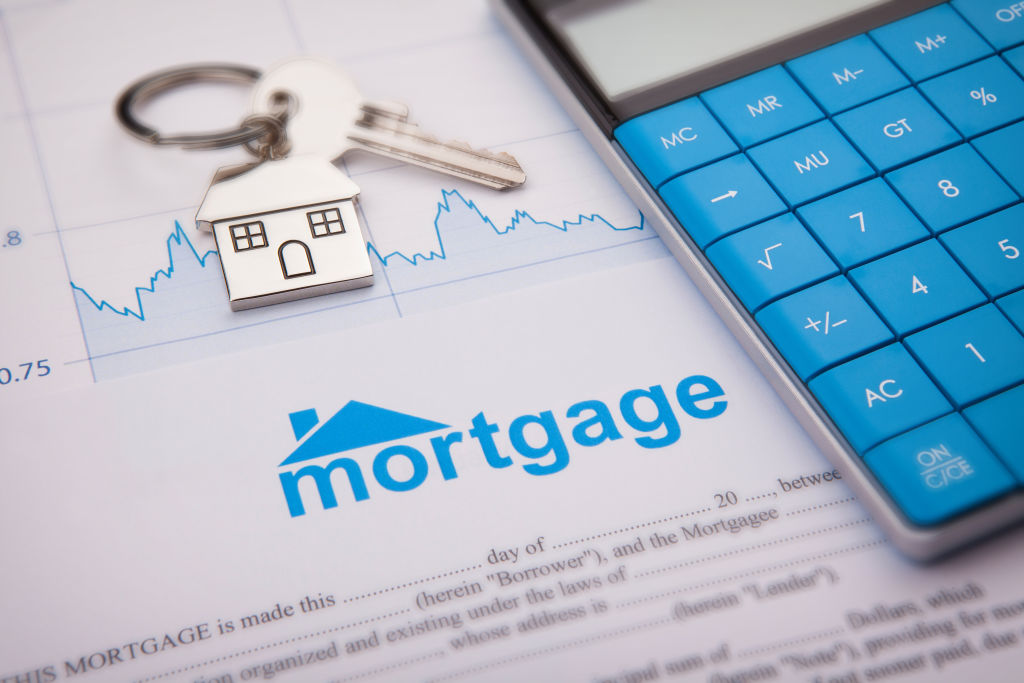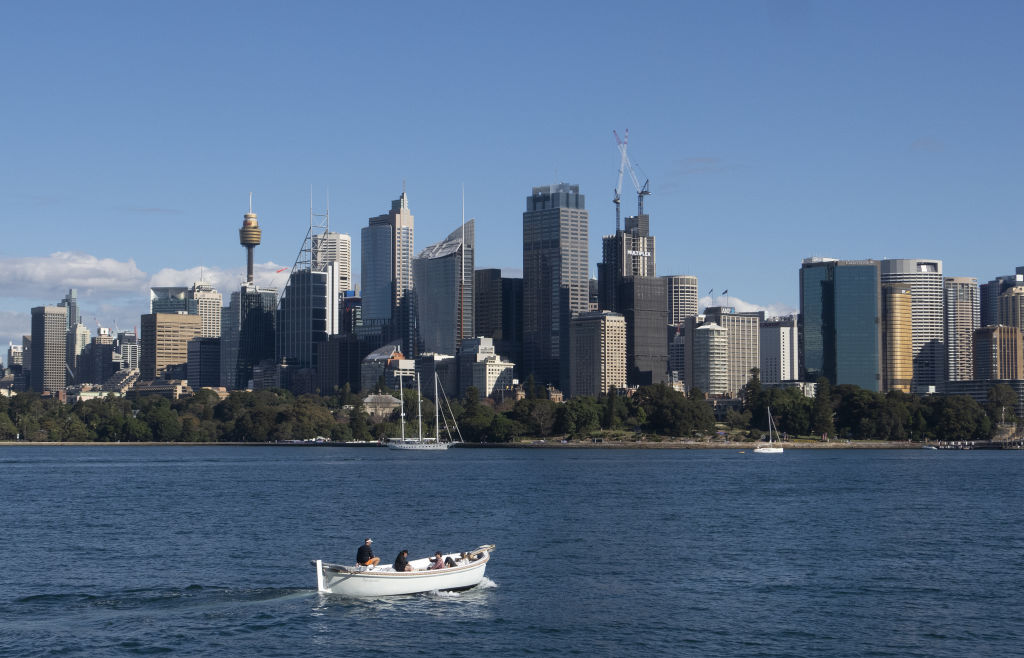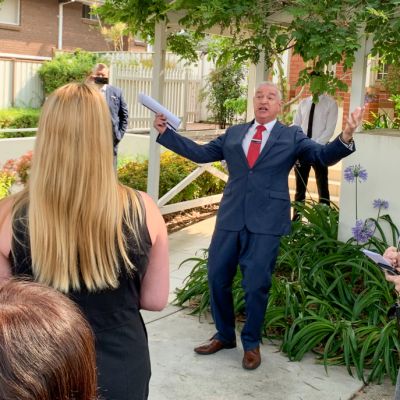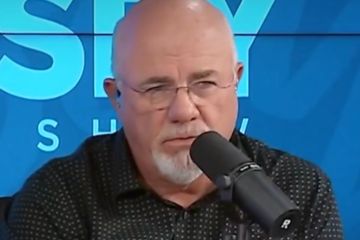As interest rate cuts offset property price growth, mortgage repayments are getting lower

Australian first-home owners are less likely to be in mortgage stress and can save as much as $181 a month on their repayments as interest rates fall, despite having to borrow more to break into the property market, new modelling shows.
Although prices are rising, repayments on new mortgages for entry-level homes are more affordable than they were a year ago, according to Domain modelling.
Paying off a mortgage has become a little easier across all capital cities, with entry-level Canberra units offering the biggest drop in repayments, by $181 over the year.
“Lower interest rates have offset rising prices over the past year,” Domain economist Trent Wiltshire says. “Even though prices are rising … paying off a mortgage on a property is easier.”

It’s only a benefit for those who can save the required deposit in the first place. Saving has become harder as cash rate cuts enable other buyers to borrow more, ultimately driving up prices for potential purchasers while returns on their savings in the bank decline.
“Yes it’s easier to pay off a mortgage, but it’s becoming harder to save up a deposit,” says Wiltshire.
“For that reason it seems logical that the First Home Loan Deposit Scheme has been so popular, because that scheme is all about avoiding having to have the 20 per cent deposit … and you can take advantage of lower and falling interest rates.”
Across most capital cities, repayments on new loans for entry-level houses now chew up less than a quarter of household income. The proportion of income spent on repayments is lower than a year ago, and also below the decade average in most cities.

In Sydney, where an entry-level house costs about $745,000 according to Domain figures, 24.3 per cent of an average income would go to repayments as of the March quarter. A household is generally considered in “mortgage stress” when repayments are greater than 30 per cent of income.
Melburnians spend the second highest proportion, with an entry-level house — costing almost $685,000 — consuming almost 23 per cent of income. Canberra was next at 19.8 per cent, followed by Hobart and Adelaide at 15.5 per cent each.
Percentage of household income for an entry-level house
| Mortgage repayments, % of household income, March quarter 2020 | Australia (combined capitals) | Sydney | Melbourne | Brisbane | Adelaide | Canberra | Perth | Hobart |
| March quarter 2020 | 19.2 | 24.3 | 22.8 | 14.5 | 15.5 | 19.8 | 12.5 | 15.5 |
| Percentage point difference compared to one year ago | -1.4 | -1.4 | -1.2 | -2.1 | -1.7 | -1.0 | -1.1 | -1.4 |
| Percentage point difference compared to 2010 to 2019 average (negative = below the average) | -2.8 | -2.2 | -1.4 | -3.2 | -3.8 | -2.2 | -5.6 | -0.5 |
Source: Domain. An entry level house is the 3rd price decile median house price for all capital cities, except for Canberra and Hobart, which are the 2nd price quintile median house price.
“We haven’t seen prices rise as much at those lower price points,” Wilshire says.
“Because rates are so low the mortgage burden is a bit below average … but if prices keep rising then that will move back towards that average level.”
Repayments eased most in Brisbane, dropping 2.2 percentage points to 14.5 per cent of income. It also had the biggest drop in dollar terms with repayments down $175 year on year.
Percentage of household income for an entry-level unit
| Mortgage repayments, % of household income, March quarter 2020 | Australia (combined capitals) | Sydney | Melbourne | Brisbane | Adelaide | Canberra | Perth | Hobart |
| March quarter 2020 | 15.0 | 21.2 | 17.3 | 11.3 | 10.3 | 13.5 | 8.0 | 12.4 |
| Percentage point difference compared to one year ago | -1.2 | -1.3 | -0.4 | -1.8 | -1.5 | -1.8 | -1.4 | -1.1 |
| Percentage point difference compared to 2010 to 2019 average (negative = below the average) | -4.2 | -4.3 | -3.1 | -5.8 | -3.8 | -3.0 | -5.3 | 1.0 |
Source: Domain. An entry level unit is the 2nd price quintile median unit price for all capital cities, except for Hobart, which is the 1st price tercile median unit price.
Unit repayments also eased across all cities, falling by up to $181 a month in Canberra – which saw the biggest drop.
Repayments were also well below the decade average, in all cities bar Hobart – up 1 per cent to 12.4 per cent of income.

“Hobart is the outlier. It’s held up pretty steadily over the past few years because prices have been rising rapidly,” Wiltshire says.
Perth was the easiest place to get ahead on repayments for both units and houses, taking up 8 per cent and 12.5 per cent of income.
Monthly repayments on an entry-level house
| Monthly mortgage repayments, March quarter 2020 | Australia (combined capitals) | Sydney | Melbourne | Brisbane | Adelaide | Canberra | Perth | Hobart |
| March quarter 2020 | $2,175 | $2,781 | $2,556 | $1,591 | $1,590 | $2,417 | $1,519 | $1,540 |
| $ difference compared to one year ago | -$89 | -$74 | -$20 | -$175 | -$113 | -$76 | -$123 | -$102 |
| % difference compared to one year ago | -3.9 | -2.6 | -0.8 | -9.9 | -6.6 | -3.1 | -7.5 | -6.2 |
Source: Domain. An entry level house is the 3rd price decile median house price for all capital cities, except for Canberra and Hobart, which are the 2nd price quintile median house price.
Prices have declined significantly in Perth over the past decade, Wiltshire says, but the market had definitely bottomed out – although prices in more affordable parts of the city remain weaker.
With the cash rate at a record low of 0.5 per cent following four cuts since mid-2019, many owners are trying to get ahead on their mortgages.
Monthly repayments on an entry-level unit
| Monthly mortgage repayments, March quarter 2020 | Australia (combined capitals) | Sydney | Melbourne | Brisbane | Adelaide | Canberra | Perth | Hobart |
| March quarter 2020 | $1,694 | $2,426 | $1,941 | $1,236 | $1,051 | $1,647 | $971 | $1,232 |
| $ difference compared to one year ago | -$79 | -$75 | $38 | -$156 | -$113 | -$181 | -$164 | -$77 |
| % difference compared to one year ago | -4.4 | -3.0 | 2.0 | -11.2 | -9.7 | -9.9 | -14.4 | -5.9 |
Source: Domain
James Algar of Mortgage Choice says clients are looking to lower repayments, with many still facing interest rates above 4.0 per cent on their home loans, and to get further ahead of their debt.
“I’ve only had one client in the last six months that was in arrears,” Algar says.
“We’re having lots of conversations around how it’s got cheaper each month as minimum payments fall, but [people say they] want to get ahead of their loans. People aren’t spending money [elsewhere] they’re just paying off their debt.”

Rate cuts and an easing in serviceability requirements by the banks, have also enabled people to borrow more.
“That has put 10 per cent more borrowing power with people … and the higher debt is still cheaper [to repay],” Algar says.
But this has pushed up prices, he noted, requiring more house hunters to try increase their borrowing power because the type of home they are looking for has pushed above their previous budget.
“We’re having that conversation daily,” Algar says. “Those who [got pre-approval but] didn’t buy last year are now back at the table.”
While a rate cut next month is likely, according to Wiltshire, its impact on buying activity could be tempered in the short term by increasingly economic uncertainty off the back of the coronavirus outbreak.
“[If the property market] has a mild downturn, and we get through it quite quickly, the lower rates will contribute to prices rising later this year … the risks around coronavirus are certainly rising.”
We recommend
We thought you might like
States
Capital Cities
Capital Cities - Rentals
Popular Areas
Allhomes
More









